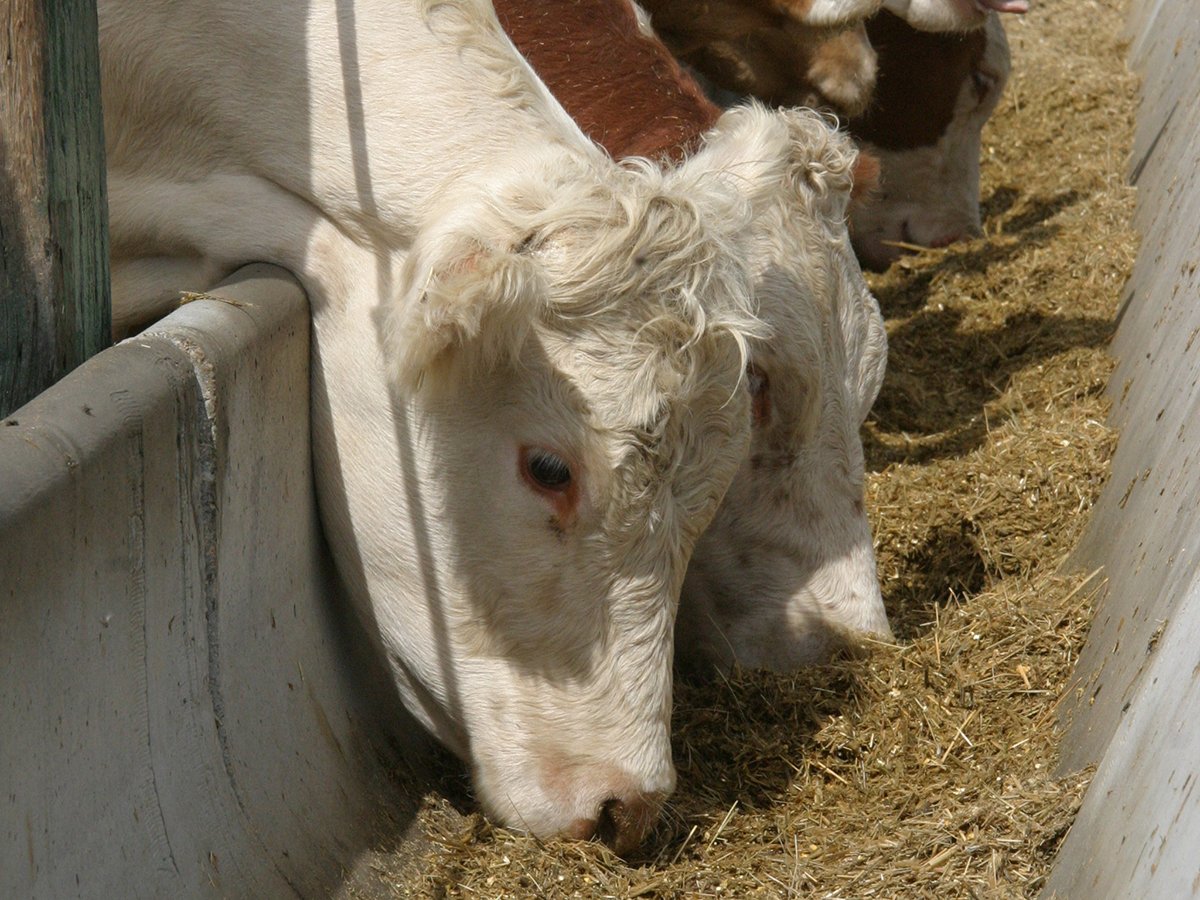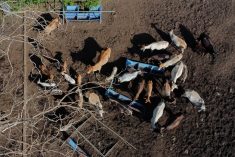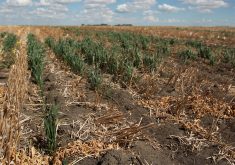Proper inoculation of chickpeas can save farmers the expense of applying nitrogen starter.
“Chickpea must be inoculated properly so that it can fix adequate amounts of nitrogen for crop growth,” says Ken Panchuk, soil fertility specialist with Saskatchewan Agriculture
“If inoculated properly, chickpea will fix all the nitrogen it needs, as shown by a recent project at the Saskatchewan Centre for Soil Research.”
Fran Walley, assistant professor and extension specialist at the University of Saskatchewan’s soil research centre who led the project, found that application of low rates of starter nitrogen typically increased early crop growth, but rarely improved final seed yields.
Read Also

Alberta cattle loan guarantee program gets 50 per cent increase
Alberta government comes to aid of beef industry with 50 per cent increase to loan guarantee program to help producers.
It seems the well-nodulated chickpea crop was able to catch up to the nitrogen-fertilized crop, and the final yields were generally similar.
“This information should save producers money by eliminating the starter nitrogen fertilizer that some apply at seeding time,” Panchuk said.
“In fact, legumes will take nitrogen out of the soil before fixing their own, so if nitrogen is added at seeding, it may delay the onset of effective nodules; the size and number may be reduced.”
But Walley cautioned producers that eliminating fertilizer nitrogen puts the onus on them to make sure the crop is properly inoculated.
“Proper inoculation is one of the most important steps in chickpea production. Yields can suffer if nodulation is poor,” she said.
“In fact, our research indicated that chickpea benefited from starter nitrogen only when nodulation was poor. We were seeding into very dry seedbeds and we knew that the conditions were less than ideal for the inoculant to do its job. So it wasn’t surprising that starter nitrogen improved yields at sites when nodulation was really poor.”
The project also found that chickpeas’ response to phosphate was variable.
Several benefits
Walley said phosphate application didn’t increase chickpea seed yields at all sites but, where the researchers did observe responses, the yield increases were dramatic.
“It’s important to realize that improving yields is not the only role of phosphate,” said Walley.
“Phosphate improves root development, stress tolerance and can hasten maturity, all of which are important for chickpea production. So even if we didn’t see yield responses at all our sites, it doesn’t make phosphate any less important. I strongly suggest that phosphates be used according to the soil test recommendations.”
This year’s chickpea crops would have benefited from phosphorus applications because of the cold wet spring. Not only did the weather add stress during the growing season, but maturity was delayed.
Panchuk agreed with Walley’s recommendation for phosphorus application and added his own advice – because chickpea roots grow slowly under the cool conditions of early seeding, phosphorus should be placed near the seed.
Walley’s three-year project involved desi- and kabuli-type chickpeas seeded in the brown and dark brown soil zones on soils with relatively low levels of available nitrogen and phosphorus.
The Nitrogen and Phosphorus Fertility Requirements and Rotation Effects of Chickpea report may be obtained by telephoning 306-787-5150 in Regina. It can be found at www.
agr.gov.sk.ca/reports/f_f_report/ffr9942.asp.














